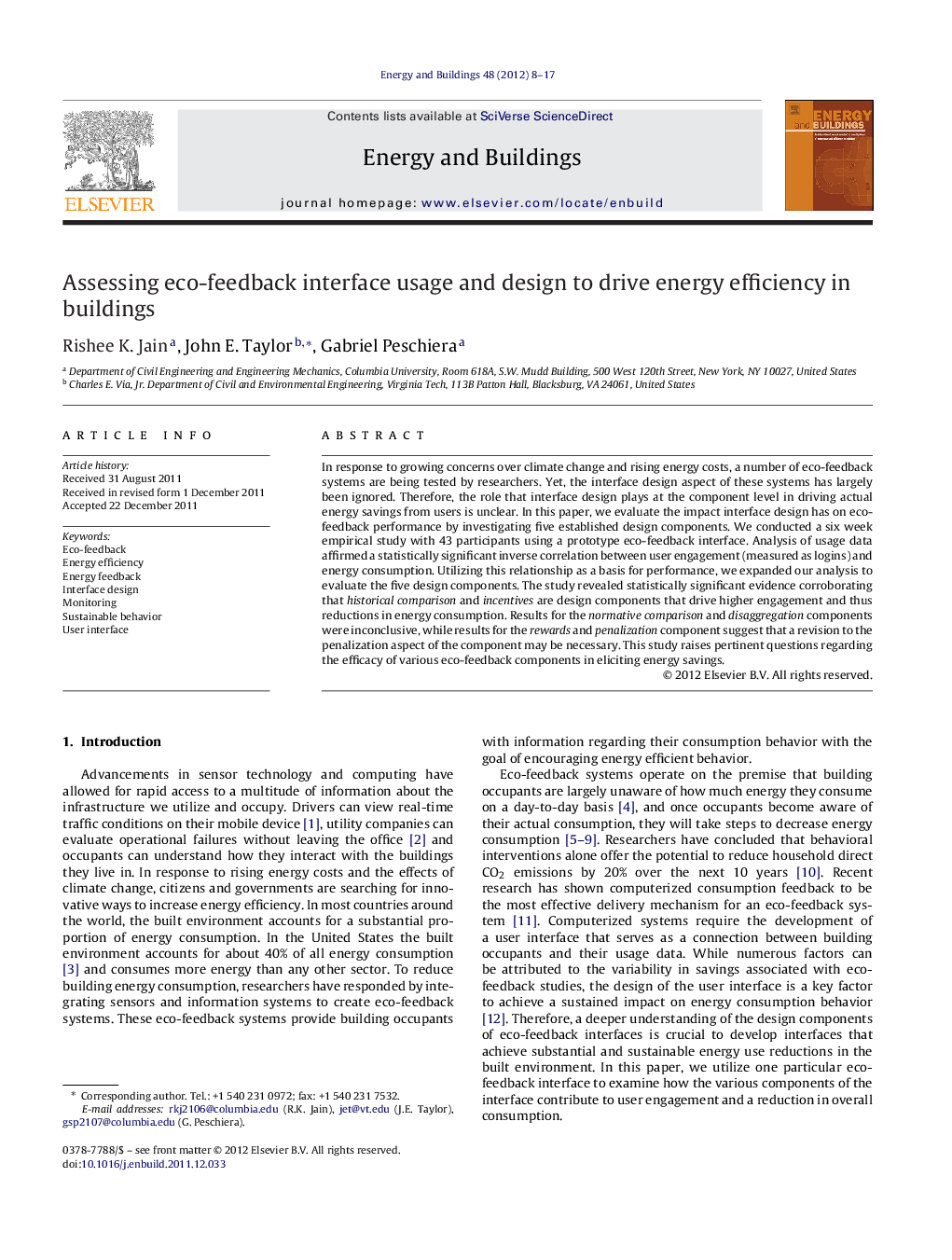| Article ID | Journal | Published Year | Pages | File Type |
|---|---|---|---|---|
| 264036 | Energy and Buildings | 2012 | 10 Pages |
In response to growing concerns over climate change and rising energy costs, a number of eco-feedback systems are being tested by researchers. Yet, the interface design aspect of these systems has largely been ignored. Therefore, the role that interface design plays at the component level in driving actual energy savings from users is unclear. In this paper, we evaluate the impact interface design has on eco-feedback performance by investigating five established design components. We conducted a six week empirical study with 43 participants using a prototype eco-feedback interface. Analysis of usage data affirmed a statistically significant inverse correlation between user engagement (measured as logins) and energy consumption. Utilizing this relationship as a basis for performance, we expanded our analysis to evaluate the five design components. The study revealed statistically significant evidence corroborating that historical comparison and incentives are design components that drive higher engagement and thus reductions in energy consumption. Results for the normative comparison and disaggregation components were inconclusive, while results for the rewards and penalization component suggest that a revision to the penalization aspect of the component may be necessary. This study raises pertinent questions regarding the efficacy of various eco-feedback components in eliciting energy savings.
► We examine the efficacy of five eco-feedback interface design components. ► Higher user engagement correlates with reductions in energy consumption. ► Historical comparison and incentives drive engagement and thus energy savings. ► Rewards and penalization and disaggregation do not drive engagement. ► Approach established to quantitatively analyze eco-feedback interface components.
